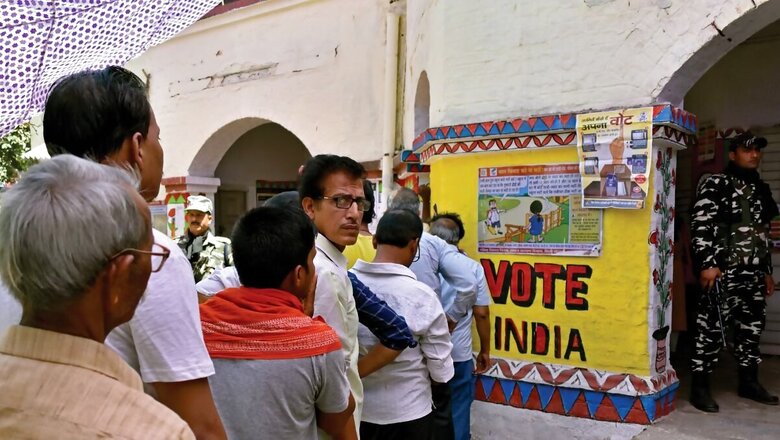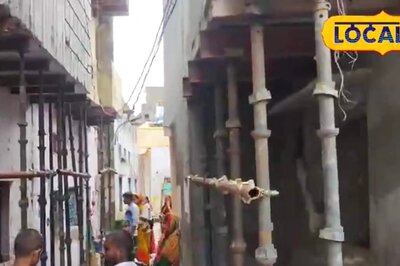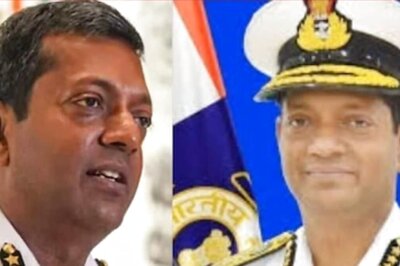
views
The idea is not without precedent. In 1951-52, 1957, 1962 and 1967, elections to state assembly and Parliament were held simultaneously. The dissolution of certain state assemblies and the dissolution of Parliament in 1970 disrupted the cycle of simultaneous elections. The times were also characterised by a single party dominance in the country. The vast scape of regional and even national parties recognised by the Election Commission did not exist in that era.
The Law Commission presented a draft report on the issue in 2018, supporting the idea primarily for two reasons. First, financial desirability of such a move makes the idea attractive. The massive expenditure on elections can be significantly reduced in the long run if elections are conducted simultaneously though there will be significant cost involved to procure EVMs, VVPATs etc in the initial years. Additional security forces’ strength will also be a challenge.
The Election Commission conducts even Lok Sabha elections in phases across the country so that the resources and forces can be moved. To conduct elections across the country in one go would be mammoth task.
Second is the qualitative aspect concerning the world’s largest democracy. It is argued that policies, mechanisms, and schemes of various governments, at the state or the Centre, are affected by the constant election cycle.
The elected political parties lack a long-term approach and intent on the policy front because of the constant election mode in the country. Elections in one state or poll promises in one state affect the sentiment of another state which may be set to vote in the next six months. The assembly elections to the state of Madhya Pradesh, Chhattisgarh and Rajasthan invariably occur close to the general elections. These elections are seen crucial in building a momentum for any political party.
Both these are serious arguments that should make the nation consider the idea of simultaneous elections. Despite these persuasive arguments, the idea is yet to see the light of the day.
There are two reasons that impede the idea of ‘One Nation, One Poll’ in India. To begin with, the vast diverse political scape of India with different regional and local political outfits has significantly altered the real politik of India — from a single party dominance in 1950s and 1960s to the present-day reality, where India has hundreds of registered political parties.
While on one hand regional parties ensure that the issues of the state or the local interest take centre stage, at the same time there is a lurking fear of national sentiments swaying voters in favour of one party, undermining regional political outfits.
Hence, many regional parties see the idea of ‘One Nation, One Poll’ as antithetical to their political existence. They often link these phobias to the spirit of federalism enshrined in the Constitution, arguing that simultaneous elections can hamper the spirit of federalism in Indian democracy.
However, there is little evidence to support the argument that regional aspirations shall be outweighed by national sentiments. For example, many states held their assembly elections very close to the general elections of 2019. States like Andhra Pradesh, Telangana, Arunachal Pradesh, Odisha, and Sikkim voted for different political parties at the state and national level.
Psephologists in the last few years have extensively documented how voters are aware of the different interests at the national and regional level.
The second reason that withholds the idea of simultaneous elections is the near constitutional impossibility of implementing the measure.
The move requires constitutional amendments to brought in which must ideally be ratified by 50 per cent of the states. To sync the election calendar across the country would require certain state assemblies to voluntarily dissolve themselves as the Centre cannot take such a step. To harmonise the calendar across the country would lead to disruption in terms of elected assemblies. Also, in an event of early elections at the Centre or Parliament being dissolved prematurely, the entire exercises of syncing the state and the national elections would again be in vain.
The Election Commission of India would need large-scale workforce, machinery, and security to conduct this exercise. In principle, the idea of simultaneous elections is great for any democracy. But the exceptional challenges of diversity, vast population and political considerations make the concept of ‘One Nation, One Poll’ almost impossible to implement.




















Comments
0 comment